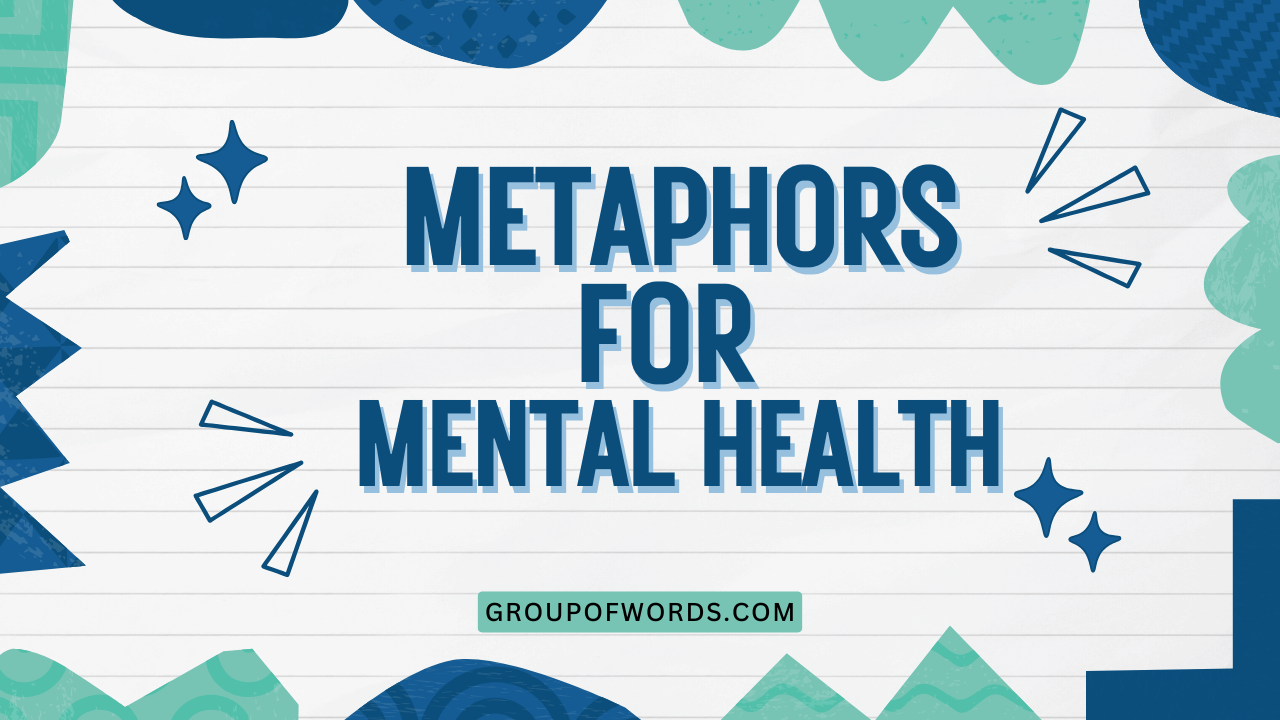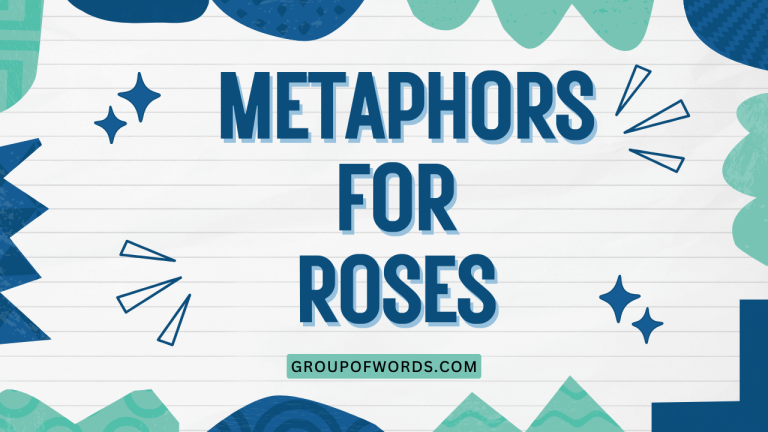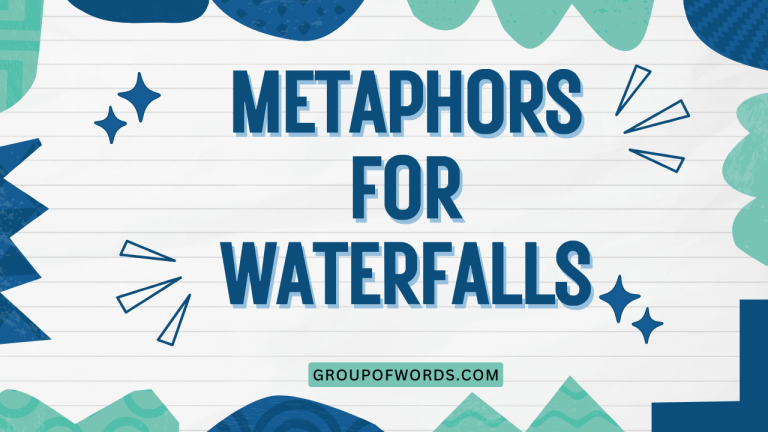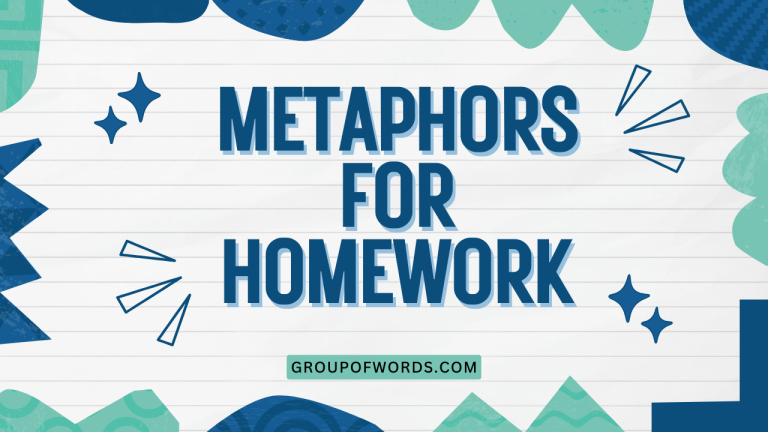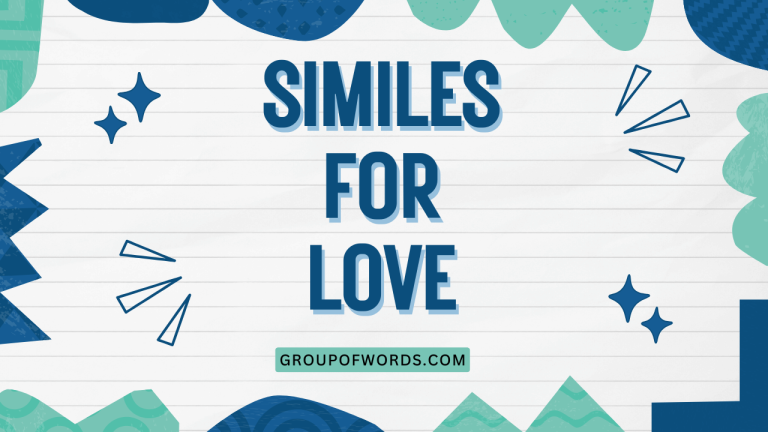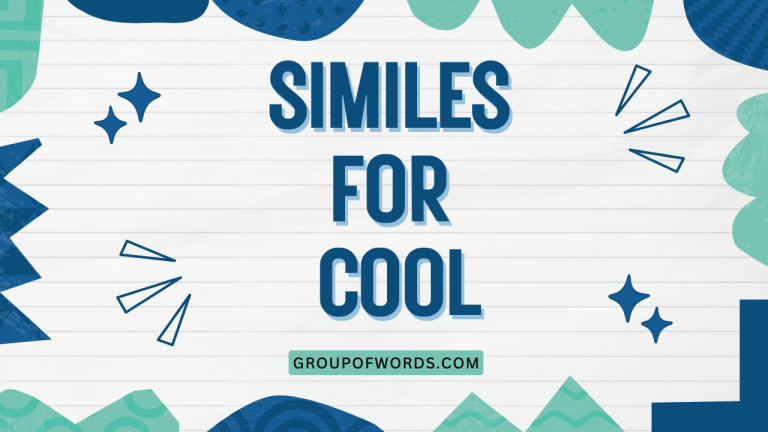Painting the Mind: Understanding Metaphors for Mental Health
Metaphors are powerful tools that allow us to understand abstract concepts by relating them to more concrete experiences. When it comes to mental health, metaphors can bridge the gap between complex emotional states and everyday understanding.
Exploring these metaphors not only enriches our vocabulary but also provides a deeper insight into the human condition. This article delves into the world of metaphors used to describe mental health, offering a comprehensive guide for anyone interested in improving their understanding of language and psychology.
From students of English to mental health professionals, this guide provides valuable insights into the persuasive power of figurative language.
Table of Contents
- Introduction
- Definition of Metaphors for Mental Health
- Structural Breakdown of Mental Health Metaphors
- Types and Categories of Mental Health Metaphors
- Examples of Mental Health Metaphors
- Usage Rules for Mental Health Metaphors
- Common Mistakes When Using Mental Health Metaphors
- Practice Exercises
- Advanced Topics in Mental Health Metaphors
- Frequently Asked Questions
- Conclusion
Introduction
Mental health is a complex and often abstract concept, making it challenging to articulate and understand. Metaphors provide a powerful way to bridge this gap by using familiar concepts to describe internal experiences.
By understanding the common metaphors used in discussions about mental health, we can gain a better appreciation for the nuances of these experiences and improve our communication skills. This article will explore the definition, structure, types, examples, usage, and common mistakes associated with metaphors for mental health, offering a comprehensive guide for anyone looking to deepen their understanding.
Definition of Metaphors for Mental Health
A metaphor is a figure of speech that describes an object or idea by comparing it to something else that is not literally applicable. Metaphors are used to create vivid imagery and convey complex ideas in a concise and relatable way.
In the context of mental health, metaphors are particularly useful for describing abstract emotional states, cognitive processes, and behavioral patterns that can be difficult to articulate directly. These metaphors often draw on concrete experiences, such as weather phenomena, physical burdens, or journeys, to provide a tangible reference point for understanding mental health conditions.
Classification: Metaphors are classified as figurative language, distinct from literal language. They rely on implied comparisons rather than explicit statements of similarity. In mental health discourse, metaphors can be categorized based on the themes they evoke, such as:
- Burden metaphors: Describing mental health as a heavy weight or load.
- Weather metaphors: Using weather conditions to represent emotional states.
- Journey metaphors: Framing mental health recovery as a path or voyage.
- Container metaphors: Representing the mind as a container for thoughts and feelings.
Function: The primary function of metaphors in mental health is to enhance understanding and communication. They allow individuals to express their experiences in a way that others can relate to, fostering empathy and connection. Metaphors can also help to reduce stigma by normalizing mental health challenges and framing them in more accessible terms. Additionally, metaphors can be used therapeutically to help individuals explore their feelings and develop new perspectives on their mental health.
Contexts: Metaphors for mental health are used in a variety of contexts, including:
- Personal narratives: Individuals use metaphors to describe their own experiences with mental health.
- Clinical settings: Therapists and counselors use metaphors to help clients understand their conditions and develop coping strategies.
- Public discourse: Media outlets and advocacy groups use metaphors to raise awareness and promote understanding of mental health issues.
- Literature and art: Creative works often employ metaphors to explore the complexities of the human psyche.
Structural Breakdown of Mental Health Metaphors
Understanding the structure of metaphors involves recognizing the key components that create the comparison. A typical metaphor consists of two main elements: the tenor and the vehicle. The tenor is the subject being described (e.g., depression), while the vehicle is the object or concept used to represent it (e.g., a dark cloud). The connection between the tenor and the vehicle is the ground, which refers to the shared characteristics or qualities that make the comparison meaningful.
For example, in the metaphor “Depression is a dark cloud,” the tenor is depression, the vehicle is a dark cloud, and the ground includes shared qualities such as heaviness, gloominess, and a sense of being obscured. Recognizing these structural elements can help us to analyze and interpret metaphors more effectively.
Here’s a breakdown of how the structural elements work together:
- Tenor (Subject): The aspect of mental health being described (e.g., anxiety, stress, recovery).
- Vehicle (Comparison): The concrete image or concept used to represent the mental health aspect (e.g., a storm, a tightrope, a journey).
- Ground (Shared Qualities): The common attributes between the tenor and the vehicle that make the comparison meaningful (e.g., intensity, precariousness, progress).
By identifying these elements, we can deconstruct metaphors and understand the underlying message they convey. This process is essential for both interpreting metaphors used by others and crafting our own to effectively communicate about mental health.
Types and Categories of Mental Health Metaphors
Metaphors for mental health can be categorized based on the themes and images they evoke. Here are some common types:
Burden Metaphors
These metaphors describe mental health conditions as a heavy weight or burden that individuals carry. They emphasize the sense of oppression and difficulty associated with mental health challenges.
Examples include “a weight on my shoulders,” “a heavy heart,” and “carrying the world on my back.”
Weather Metaphors
Weather metaphors use weather conditions to represent emotional states and mental health experiences. They often convey the fluctuating and unpredictable nature of emotions.
Examples include “a dark cloud hanging over me,” “a stormy mind,” and “feeling under the weather.”
Journey Metaphors
Journey metaphors frame mental health recovery as a path or voyage, with ups and downs, obstacles, and milestones. They highlight the process of growth and change.
Examples include “a long road to recovery,” “navigating a difficult path,” and “reaching a turning point.”
Container Metaphors
Container metaphors represent the mind as a container for thoughts and feelings. They emphasize the idea of containing or managing emotions.
Examples include “bottling up emotions,” “a mind full of thoughts,” and “overflowing with feelings.”
War/Battle Metaphors
These metaphors depict mental health struggles as a battle or war, emphasizing the conflict and effort involved in managing mental health conditions. Examples include “fighting depression,” “battling anxiety,” and “winning the war against addiction.”
Darkness/Light Metaphors
These metaphors use the contrast between darkness and light to represent different states of mind. Darkness often symbolizes negative emotions and mental health challenges, while light represents hope, recovery, and well-being.
Examples include “a dark place,” “seeing the light at the end of the tunnel,” and “shining a light on mental health.”
Examples of Mental Health Metaphors
This section provides extensive examples of mental health metaphors, organized by category, to illustrate the different ways in which these metaphors are used.
Burden Metaphors Examples
The following table illustrates various burden metaphors used in the context of mental health. These metaphors typically convey a sense of heaviness, oppression, or difficulty associated with mental health challenges.
| Metaphor | Explanation | Example Sentence |
|---|---|---|
| A weight on my shoulders | Represents a heavy burden of responsibility or stress. | The stress of work has become a weight on my shoulders, making it hard to focus. |
| A heavy heart | Describes a feeling of sadness or grief. | After the loss, she carried a heavy heart for many months. |
| Carrying the world on my back | Indicates an overwhelming sense of responsibility for everything around you. | He feels like he’s carrying the world on his back, trying to support everyone else’s problems. |
| A ton of bricks | Signifies a sudden and overwhelming shock or realization. | The news hit her like a ton of bricks, leaving her speechless. |
| An anchor dragging me down | Represents something that is holding you back or preventing progress. | Her anxiety feels like an anchor dragging me down, making it hard to move forward. |
| A millstone around my neck | Indicates a heavy burden or responsibility that is difficult to bear. | The debt had become a millstone around my neck, causing constant stress. |
| A burden to bear | Describes a difficult or painful situation that must be endured. | She saw her illness as a burden to bear, but she faced it with courage. |
| Weighed down by worries | Represents being burdened by anxieties and concerns. | He felt weighed down by worries about the future, making it hard to enjoy the present. |
| A lead weight in my stomach | Describes a feeling of anxiety or dread. | Before the presentation, I had a lead weight in my stomach. |
| Burdened with grief | Indicates being overwhelmed by sadness and loss. | After the funeral, he was burdened with grief and struggled to cope. |
| Saddled with responsibility | Represents being burdened by duties and obligations. | As the eldest child, she felt saddled with responsibility for her younger siblings. |
| Crushed by expectations | Describes being overwhelmed by the demands and expectations of others. | He felt crushed by expectations, struggling to meet everyone’s demands. |
| A yoke around my neck | Indicates a heavy burden or oppressive force. | The strict rules felt like a yoke around my neck, stifling his creativity. |
| A mountain to climb | Represents a significant challenge or obstacle to overcome. | Overcoming her addiction felt like a mountain to climb. |
| A heavy load | Describes a significant burden or responsibility. | Balancing work and family life can be a heavy load to carry. |
| Dragging my feet | Indicates reluctance or difficulty in moving forward. | He was dragging my feet, feeling overwhelmed by the task at hand. |
| Staggering under the weight | Represents being overwhelmed and struggling to cope. | She was staggering under the weight of her responsibilities. |
| Struggling to stay afloat | Describes the feeling of barely managing to cope with difficulties. | With mounting bills, he was struggling to stay afloat. |
| Sinking under the pressure | Indicates being overwhelmed and unable to cope with stress. | She felt like she was sinking under the pressure of her demanding job. |
| Drowning in despair | Represents being overwhelmed by hopelessness and sadness. | After losing everything, he felt like he was drowning in despair. |
| Suffocating under stress | Describes feeling trapped and overwhelmed by stress. | She felt like she was suffocating under stress, unable to breathe. |
| A ball and chain | Indicates something that restricts freedom and movement. | His negative thoughts felt like a ball and chain, preventing him from enjoying life. |
| A burden of guilt | Represents being weighed down by feelings of guilt and remorse. | He carried a burden of guilt for his past mistakes. |
Weather Metaphors Examples
The following table showcases weather metaphors used to describe mental health. These metaphors often capture the changing and unpredictable nature of emotional states.
| Metaphor | Explanation | Example Sentence |
|---|---|---|
| A dark cloud hanging over me | Represents a persistent feeling of sadness or depression. | A dark cloud has been hanging over me since I lost my job. |
| A stormy mind | Describes a state of mental turmoil or anxiety. | Her mind was a stormy sea of thoughts, making it hard to focus. |
| Feeling under the weather | Indicates a general feeling of unwellness, both physically and mentally. | I’ve been feeling under the weather lately, both physically and emotionally. |
| A ray of sunshine | Represents a source of hope or happiness. | Her smile was a ray of sunshine on a gloomy day. |
| A whirlwind of emotions | Describes a rapid and overwhelming succession of feelings. | After the accident, she experienced a whirlwind of emotions. |
| Calm after the storm | Represents a period of peace and tranquility following a difficult time. | After weeks of stress, there was finally calm after the storm. |
| A blizzard of thoughts | Indicates an overwhelming and chaotic stream of thoughts. | During the panic attack, she was caught in a blizzard of thoughts. |
| A fog of confusion | Represents a state of mental uncertainty or disorientation. | He was lost in a fog of confusion after the traumatic event. |
| A drought of inspiration | Describes a lack of creativity or motivation. | He was experiencing a drought of inspiration, unable to write anything new. |
| A flood of memories | Indicates a sudden and overwhelming rush of memories. | Seeing the old house triggered a flood of memories. |
| A heatwave of anger | Represents a sudden and intense surge of anger. | He was overcome by a heatwave of anger when he heard the news. |
| A gentle breeze of hope | Describes a subtle but encouraging feeling of optimism. | A gentle breeze of hope stirred within her as she started therapy. |
| A thunderclap of realization | Indicates a sudden and impactful understanding or awareness. | He had a thunderclap of realization about his unhealthy habits. |
| A shower of blessings | Represents an abundance of positive experiences or good fortune. | They felt like they were receiving a shower of blessings after overcoming their challenges. |
| Cloudy with a chance of tears | Describes a state of emotional vulnerability and potential sadness. | She was feeling cloudy with a chance of tears after the argument. |
| A hurricane of grief | Represents an overwhelming and destructive experience of grief. | The loss of her mother brought a hurricane of grief that shook her world. |
| A rainbow after the rain | Indicates hope and beauty following a period of difficulty or sadness. | After months of therapy, she started to see a rainbow after the rain. |
| A cold front of apathy | Describes a sudden onset of indifference or lack of interest. | A cold front of apathy swept over him, leaving him uninterested in everything. |
| A sunny disposition | Represents a consistently cheerful and optimistic attitude. | Despite her challenges, she maintained a sunny disposition. |
| A downpour of stress | Indicates an overwhelming amount of stress and pressure. | He was caught in a downpour of stress at work, making it hard to cope. |
| A gentle rain of peace | Represents a calming and soothing sense of serenity. | After meditating, she felt a gentle rain of peace washing over her. |
| A clear sky of clarity | Describes a state of mental clarity and understanding. | After the therapy session, he had a clear sky of clarity in his mind. |
| A summer breeze of happiness | Represents a light and pleasant feeling of joy and contentment. | The vacation brought a summer breeze of happiness into her life. |
| A winter chill of loneliness | Describes a cold and isolating feeling of being alone. | The winter chill of loneliness settled over him after his friends moved away. |
Journey Metaphors Examples
The table below provides examples of journey metaphors used in the context of mental health. These metaphors often emphasize the process of recovery and growth as a path or voyage.
| Metaphor | Explanation | Example Sentence |
|---|---|---|
| A long road to recovery | Represents the extended and challenging process of healing from a mental health condition. | She knew it would be a long road to recovery, but she was determined to keep going. |
| Navigating a difficult path | Describes the process of dealing with challenges and obstacles in mental health. | He was navigating a difficult path through his grief, taking one step at a time. |
| Reaching a turning point | Indicates a significant moment of change or decision in the recovery process. | She reached a turning point in therapy when she started addressing her childhood trauma. |
| On the right track | Represents making progress and moving in a positive direction. | He felt like he was finally on the right track after starting medication. |
| Lost in the woods | Describes a state of confusion or disorientation in mental health. | She felt lost in the woods, unsure of how to find her way back to mental well-being. |
| A journey of self-discovery | Represents the process of exploring and understanding oneself. | Therapy became a journey of self-discovery, helping her understand her emotions. |
| Climbing uphill | Indicates a difficult and challenging effort to improve mental health. | Overcoming his addiction felt like climbing uphill every day. |
| Smooth sailing | Represents a period of ease and progress in mental health. | After months of therapy, she experienced a period of smooth sailing. |
| Hitting a roadblock | Describes encountering an obstacle or setback in the recovery process. | He hit a roadblock in his recovery when he relapsed. |
| Coming out of the darkness | Represents emerging from a period of depression or difficulty. | She was finally coming out of the darkness after months of therapy. |
| A winding path | Indicates a journey with many twists and turns, but eventual progress. | Her healing process was a winding path, with ups and downs along the way. |
| Setting sail | Represents beginning a new phase or chapter in life. | After graduating, he felt like he was setting sail on a new adventure. |
| Charting a new course | Describes making a deliberate decision to change direction in life. | She decided to chart a new course after realizing her current path was unsustainable. |
| A fork in the road | Represents a decision point with significant consequences. | He came to a fork in the road when deciding whether to stay in his job or pursue his passion. |
| Lost at sea | Describes feeling disoriented and without direction in life. | After losing his job, he felt lost at sea, unsure of what to do next. |
| Finding my way | Represents the process of discovering one’s purpose and direction. | Through counseling, she began finding my way back to a sense of self. |
| A stepping stone | Indicates an event or experience that leads to further progress. | Each small achievement was a stepping stone on her path to recovery. |
| On the horizon | Represents something that is anticipated or expected to happen in the future. | She could see hope on the horizon as she continued her therapy. |
| Running in circles | Describes feeling stuck and making no progress. | He felt like he was running in circles, unable to break free from his negative thoughts. |
| A light at the end of the tunnel | Represents hope and the possibility of improvement after a difficult period. | Seeing the light at the end of the tunnel gave her the strength to keep going. |
| Blazing a trail | Describes pioneering a new approach or path in life. | She was blazing a trail for other women in her field. |
| Sailing into uncharted waters | Represents entering a new and unknown situation. | Starting her own business felt like sailing into uncharted waters. |
| Road less traveled | Indicates choosing a path that is unconventional or challenging. | He decided to take the road less traveled, pursuing his artistic dreams. |
Usage Rules for Mental Health Metaphors
Using metaphors effectively requires sensitivity and awareness. Here are some guidelines:
- Consider your audience: Ensure that the metaphor is relatable and understandable to your audience.
- Avoid clichés: Strive for originality and avoid overused metaphors that have lost their impact.
- Be mindful of connotations: Choose metaphors with positive or neutral connotations to avoid perpetuating stigma.
- Provide context: Explain the intended meaning of the metaphor to ensure clear communication.
- Respect individual preferences: Be open to alternative metaphors that resonate more with individuals.
It’s also important to be aware of the potential limitations of metaphors. While they can enhance understanding, they can also oversimplify complex experiences or create unintended associations.
Therefore, use metaphors judiciously and supplement them with clear and direct language.
Common Mistakes When Using Mental Health Metaphors
Several common mistakes can undermine the effectiveness of mental health metaphors:
- Using stigmatizing metaphors: Avoid metaphors that reinforce negative stereotypes or blame individuals for their mental health conditions.
- Overusing metaphors: Relying too heavily on metaphors can obscure the underlying message and create confusion.
- Misinterpreting metaphors: Failing to understand the intended meaning of a metaphor can lead to miscommunication.
- Ignoring cultural differences: Be aware that metaphors can have different meanings or connotations in different cultures.
Here’s a table illustrating common mistakes with examples:
| Mistake | Incorrect Example | Correct Example | Explanation |
|---|---|---|---|
| Stigmatizing Metaphor | “He’s a ticking time bomb.” | “He’s under a lot of stress.” | The incorrect example implies danger and unpredictability, while the correct example acknowledges the individual’s stress in a neutral way. |
| Overusing Metaphors | “My mind is a stormy sea, and I’m drowning in a flood of emotions. It’s a dark cloud hanging over me, and I’m lost in the woods.” | “I’m feeling overwhelmed and disoriented.” | The incorrect example uses too many metaphors, making the message confusing. The correct example is direct and clear. |
| Misinterpreting Metaphors | “She said she was climbing uphill, so she must be enjoying the challenge.” | “She said she was climbing uphill, so she must be finding it difficult but is persevering.” | The incorrect example assumes a positive interpretation, while the correct example acknowledges the effort involved. |
| Ignoring Cultural Differences | Using a metaphor about “facing the music” to someone unfamiliar with Western musical traditions. | “She had to accept the consequences of her actions.” | The incorrect example relies on a culturally specific reference, while the correct example is universally understandable. |
Practice Exercises
Test your understanding of mental health metaphors with these exercises:
Exercise 1: Identifying Metaphors
Identify the metaphors in the following sentences:
| Question | Answer |
|---|---|
| 1. Her anxiety is a wild beast. | Anxiety is a wild beast |
| 2. He’s been feeling blue lately. | Feeling blue |
| 3. The therapy session was a lifeline. | Therapy session was a lifeline |
| 4. She’s drowning in despair. | Drowning in despair |
| 5. His mind is a maze. | Mind is a maze |
| 6. She’s carrying a heavy burden. | Carrying a heavy burden |
| 7. The road to recovery is long. | Road to recovery is long |
| 8. He’s trapped in a dark place. | Trapped in a dark place |
| 9. Her smile is a ray of sunshine. | Smile is a ray of sunshine |
| 10. He’s battling his demons. | Battling his demons |
Exercise 2: Matching Metaphors to Meanings
Match the metaphors to their corresponding meanings:
| Metaphor | Meaning |
|---|---|
| 1. A weight on my shoulders | (c) A heavy burden of responsibility |
| 2. A stormy mind | (d) A state of mental turmoil |
| 3. A long road to recovery | (a) A challenging process of healing |
| 4. Bottling up emotions | (b) Suppressing feelings |
Answers: 1-c, 2-d, 3-a, 4-b
Exercise 3: Rewriting Sentences with Metaphors
Rewrite the following sentences using metaphors:
| Original Sentence | Rewritten Sentence with Metaphor |
|---|---|
| 1. He felt very sad. | He felt like a dark cloud was hanging over him. |
| 2. She was very anxious. | Her anxiety was a wild beast, tearing at her insides. |
| 3. The situation was very difficult. | The situation was a mountain to climb. |
| 4. He was making progress in therapy. | He was finally on the right track in therapy. |
| 5. She was suppressing her feelings. | She was bottling up her emotions. |
| 6. He was overwhelmed with grief after the loss. | He was drowning in a hurricane of grief after the loss. |
| 7. She felt she was barely coping with her responsibilities. | She felt like she was struggling to stay afloat amidst her responsibilities. |
| 8. He felt like he had no creativity or motivation. | He was experiencing a drought of inspiration, unable to create anything new. |
| 9. The therapy session was very helpful. | The therapy session was a lifeline in a sea of despair. |
| 10. He was feeling confused and disoriented after the trauma. | He was lost in a fog of confusion after the traumatic event. |
Advanced Topics in Mental Health Metaphors
For advanced learners, exploring the cultural and historical context of mental health metaphors can provide deeper insights. Different cultures may use different metaphors to describe mental health experiences, reflecting their unique beliefs and values.
Additionally, the use of metaphors in mental health has evolved over time, influenced by changing attitudes and understandings of mental illness.
Another advanced topic involves analyzing the ethical implications of using metaphors in mental health. While metaphors can be helpful for communication, they can also perpetuate harmful stereotypes or misrepresent complex experiences.
Critical analysis of the potential impact of metaphors is essential for responsible and ethical use.
Frequently Asked Questions
Here are some frequently asked questions about metaphors for mental health:
- What is the purpose of using metaphors for mental health?
Metaphors help simplify complex emotional and psychological states, making them more understandable and relatable. They facilitate communication, reduce stigma, and provide a framework for exploring personal experiences in therapy and self-reflection.
- How can I identify a metaphor in a sentence about mental health?
Look for language that describes a mental health condition by comparing it to something else that is not literally true. For example, “depression is a dark cloud” is a metaphor because depression is not actually a cloud, but the comparison helps convey the feeling of heaviness and gloom.
- Are some metaphors for mental health more helpful than others?
Yes, metaphors that are empowering, normalizing, and avoid stigmatizing language are generally more helpful. Metaphors that promote understanding and empathy are preferable to those that reinforce negative stereotypes or blame individuals for their conditions.
- Can metaphors be harmful in discussions about mental health?
Yes, metaphors can be harmful if they are used insensitively, perpetuate stereotypes, or oversimplify complex experiences. It’s important to choose metaphors carefully and be mindful of their potential impact on others.
- How do cultural differences affect the use of metaphors in mental health?
Different cultures may have different metaphors for mental health that reflect their unique beliefs and values. It’s important to be aware of these cultural differences and avoid using metaphors that may be offensive or misunderstood in certain contexts.
- How can I use metaphors effectively in my own writing about mental health?
Choose metaphors that are relatable, original, and avoid clichés. Provide context to explain the intended meaning of the metaphor, and be open to alternative metaphors that resonate more with your audience. Use metaphors judiciously and supplement them with clear and direct language.
- What are some examples of empowering metaphors for mental health?
Examples include “recovery is a journey,” “therapy is a lifeline,” and “resilience is a muscle.” These metaphors emphasize the potential for growth, support, and strength in the face of mental health challenges.
- How can understanding mental health metaphors help me in my daily life?
Understanding mental health metaphors can improve your communication skills, enhance your empathy, and help you to better understand your own emotional experiences and those of others. It can also promote a more nuanced and compassionate view of mental health issues.
Conclusion
Metaphors are indispensable tools for understanding and communicating about mental health. By exploring the diverse types, structures, and usages of these metaphors, we can enhance our ability to articulate complex emotional states, foster empathy, and promote understanding.
Sensitivity to cultural differences, awareness of potential pitfalls, and conscious effort to use empowering language are key to harnessing the full potential of metaphors in mental health discourse. As we continue to refine our understanding of these linguistic tools, we can contribute to a more compassionate and informed dialogue about mental health.
